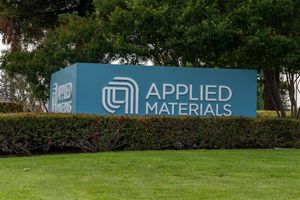Palm Beach, FL – April 13, 2022 – FinancialNewsMedia.com News Commentary Lithium is hugely important to the EV industry as it’s a critical element in EV batteries. Therefore, the race is on to get these vehicles to market by securing this necessary raw material. In response, lithium demand is soaring and prices are at record highs as supply issues persist. In today’s article we discuss this issue with reference to Tesla (NASDAQ: TSLA), Rivian Automotive (NASDAQ: RIVN) and Ford (NYSE: F).
The electric vehicle industry is gearing up for a boom. Although many EV stocks have plateaued recently, there’s no doubt they are the future of domestic travel. Therefore, investors are looking to the longer term. In this EV earnings season specifically, investors are keeping tabs on delivery projections.
For example, as Tesla (TSLA) seeks a second stock split, the most famous EV company of all is also getting set to report its monthly deliveries. However, shortage of commodities such as lithium could slow production across the industry, which would be detrimental to the stocks.
Lithium is often the first commodity to spring to mind when considering EVs. That’s because it’s a critical element in the EV battery. So, to ensure EV companies meet their delivery targets, they must secure the necessary raw materials. In response, lithium demand is soaring. Prices are at record highs and supply tightness persists.
One company looking to bring high quality lithium products to the market is Arena Minerals (OTCQB: AMRZF) (TSX.V: AN). Arena is a junior developer operating in South America and it’s getting noticed thanks to its new lithium brine processing technology.
A Competitive Solution
Arena Minerals has developed a proprietary brine processing technology and de-risked business model, designed to produce more competitive battery-grade lithium products.
Lithium brine deposits are accretions of salty groundwater enriched with dissolved lithium. These lithium brines are only found in certain world regions, with the majority located in Chile and Argentina. Arena Minerals’ projects are strategically located in these regions.
Arena Minerals is taking an integrated approach to developing lithium brine resources for the battery industry. Its process is unique, potentially cost-saving and less risky than other conventional methods. Better still, its timing is impeccable as it catches the wave of soaring lithium demand.
Arena is redefining the processing of its lithium brines with this new streamlined approach. This will potentially reduce capital expenditures (CAPEX) and operating expenses (OPEX) while also decreasing the time to cash flow and reducing operational risk. Combined, this method greatly improves Arena’s end goal in producing a salable technical-grade lithium chloride.
Strategically Aligned with Ganfeng and LAC
Arena Minerals acquired a significant project in Argentina, helping attract two prominent strategic investors.
Ganfeng Lithium Co Ltd and Lithium Americas Corp each own approximately 18% of the company, with Ganfeng also owning 35% of Arena’s flagship asset. Ganfeng is the world’s largest producer of battery-grade lithium and has also secured a lucrative lithium supply contract with Tesla.
Heading up Arena Minerals is an experienced leadership team with direct involvement in lithium brine processing and production of battery-grade materials.
Executive Chairman, Eduardo Morales, has been involved in the lithium brine industry for over 40 years, during which time he developed one of today’s leading lithium mines in Chile.
Combined, the team has been involved in building and ultimately selling two prominent companies: Rockwood sold for $6.2bn in 2014 to Albemarle Corp., and Lithium-X Energy sold for $265m in 2018.
Arena Minerals intends to produce technical grade lithium chloride. On site testing is underway, aiming to produce this compound which contains 6% lithium content (or 35% lithium chloride) directly from solar-powered evaporation ponds. This significantly reduces the capital intensity and operational risk.
Arena’s business model, which is adapted from Mr. Morales’ success in Atacama (Chile), dramatically reduces capital requirements compared to other brine operations in Argentina. This is a serious boon to the EV industry at a time when it is really needed.
The Lithium Supply Crunch Could Hamper the Transition to EVs
The big EV companies are scrambling to secure lithium supply contracts and source raw materials. This is great while supply is there, but even with agreements in place supplies are tight and demand is soaring as more and more companies jump on the EV bandwagon.
Although there are plentiful quantities of lithium on the planet, the speed it’s being extracted and refined doesn’t match the pace demand is accelerating at. By 2030, global demand for lithium is expected to exceed two million metric tons of lithium carbonate equivalent (LCE). That’s more than double the demand forecast for 2025.
If companies like Tesla, Rivian and NIO have to wait to secure their lithium supplies, consumers have to wait to get their cars. This will lead to higher prices and impatience among the everyday buyer who may lose interest in transitioning and continue to buy petrol and diesel cars. With so much invested in the EV transition, no one wants it to slow simply because the supply chain crisis couldn’t be managed.
Tesla, for example, has ambitious plans to extend its portfolio of sedans and SUVs to introduce a semi-truck and supercar by 2023, with an electric ATV, an affordable $25k car and a van in the pipeline too.
An ongoing supply crunch could be detrimental to the likelihood of these additions transpiring on time.
Likewise, Rivian plans to manufacture up to 400k vehicles a year from 2024, but are already scrambling to meet 55k pre-orders for its R1T and R1S by the end of next year. Then it has the ambitious target of delivering 100k delivery vans to Amazon by 2030, but preferably by 2025.
Finally, Ford expects 40% to 50% of its global vehicle volume to be fully electric by 2030. Ford said it would introduce three new electric passenger vehicles and four new electric commercial vehicles in Europe by 2024. Additionally, it plans to sell more than 600k EVs in the region by 2026. Ford’s global goal is to sell more than two million EVs a year and achieve an adjusted operating profit margin of 10% by 2026.
DISCLAIMER: FN Media Group LLC (FNM), which owns and operates FinancialNewsMedia.com and MarketNewsUpdates.com, is a third party publisher and news dissemination service provider, which disseminates electronic information through multiple online media channels. FNM is NOT affiliated in any manner with any company mentioned herein. FNM and its affiliated companies are a news dissemination solutions provider and are NOT a registered broker/dealer/analyst/adviser, holds no investment licenses and may NOT sell, offer to sell or offer to buy any security. FNM’s market updates, news alerts and corporate profiles are NOT a solicitation or recommendation to buy, sell or hold securities. The material in this release is intended to be strictly informational and is NEVER to be construed or interpreted as research material. All readers are strongly urged to perform research and due diligence on their own and consult =a licensed financial professional before considering any level of investing in stocks. All material included herein is republished content and details which were previously disseminated by the companies mentioned in this release. FNM is not liable for any investment decisions by its readers or subscribers. Investors are cautioned that they may lose all or a portion of their investment when investing in stocks. For current services performed FNM has been compensated twenty six hundred dollars for news coverage of the current press releases issued by Arena Minerals by a non-affiliated third party. FNM HOLDS NO SHARES OF ANY COMPANY NAMED IN THIS RELEASE.
This release contains “forward-looking statements” within the meaning of Section 27A of the Securities Act of 1933, as amended, and Section 21E the Securities Exchange Act of 1934, as amended and such forward-looking statements are made pursuant to the safe harbor provisions of the Private Securities Litigation Reform Act of 1995. “Forward-looking statements” describe future expectations, plans, results, or strategies and are generally preceded by words such as “may”, “future”, “plan” or “planned”, “will” or “should”, “expected,” “anticipates”, “draft”, “eventually” or “projected”. You are cautioned that such statements are subject to a multitude of risks and uncertainties that could cause future circumstances, events, or results to differ materially from those projected in the forward-looking statements, including the risks that actual results may differ materially from those projected in the forward-looking statements as a result of various factors, and other risks identified in a company’s annual report on Form 10-K or 10-KSB and other filings made by such company with the Securities and Exchange Commission. You should consider these factors in evaluating the forward-looking statements included herein, and not place undue reliance on such statements. The forward-looking statements in this release are made as of the date hereof and FNM undertakes no obligation to update such statements.
Contact Information:
Media Contact email: editor@financialnewsmedia.com – +1(561)325-8757
SOURCE: FinancialNewsMedia.com
The post How Lithium Shortages Could Sink the EV Transition appeared first on Financial News Media.






